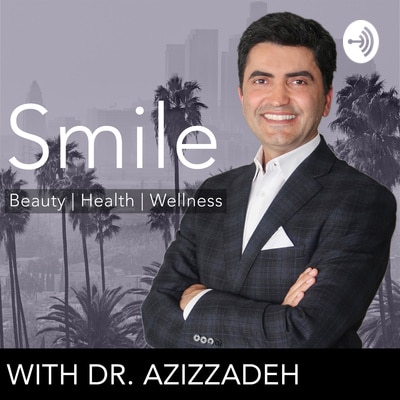Smiling is one of the most profound actions of human beings, according to globally recognized facial plastic and reconstructive surgeon Dr. Babak Azizzadeh. It allows people to convey emotions and connect with one another.
In this episode of the Smile podcast, Dr. Azizzadeh explores facial neuromuscular retraining (NMR) and how it is used to help facial paralysis patients regain the ability to smile. Dr. Azizzadeh discusses NMR with occupational therapist Jackie Diels, who provides insights into how this treatment can help patients dealing with Bell’s palsy, synkinesis, and other forms of facial paralysis.
How Do Patients Cope with Facial Paralysis?
Smiling comes from the emotional part of the brain, Diels points out. It is automatic, Diels says; but, this may no longer be the case for patients dealing with facial paralysis.
Facial paralysis can cause facial asymmetry. It can also cause patients to feel depressed, sad, and embarrassed due to their facial appearance.
Surgery can be used to correct facial nerve deformities that cause facial paralysis. Following surgery, patients may require physical therapy to restore the smile function.
Is Physical Therapy Necessary to Treat Facial Paralysis?
Physical therapy may be required to achieve the full results of a facial paralysis treatment. It involves the use of various facial nerve recovery exercises to improve muscle sequencing.
Although patients can undergo a surgical procedure to treat their facial paralysis symptoms, they may require physical therapy to correct unwanted and involuntary facial muscle movements. With an NMR program, facial paralysis patients can learn appropriate facial muscle exercises, so they can once again naturally smile and produce other facial expressions.
How Does an NMR Program Work?
An NMR program can be beneficial for children and adults coping with facial paralysis on one or both sides of the face. It teaches patients how to flex muscles required for facial expressions and relax muscles that are not supposed to be moving.
Facial paralysis patients can address linked facial movements during an NMR program, Diels notes. The program involves the use of exercises that isolate the muscles responsible for specific facial expressions.
Diels points out that she typically begins an NMR program by educating a patient about facial muscle movements. She teaches a patient how coordinated muscle movements are used to make different facial expressions.
Next, an evaluation is used to determine which facial muscle exercises are necessary. An NMR program is tailored to a patient, enabling him or her to use specific exercises to strengthen the facial muscles and improve their coordination.
Botox can be used in combination with an NMR program. Or, light massaging of the facial muscles can be beneficial during the program.
Patients receive help to ensure they can complete their exercises properly over the course of an NMR program. They also receive emotional support, so they can get the best results from their program.
Learn More About Facial Neuromuscular Retraining
NMR offers a safe, effective way for facial paralysis patients to enhance facial muscle movement. Listen to the Smile podcast to hear what Dr. Azizzadeh and Jackie Diels have to say about NMR, how it works, and its benefits.
